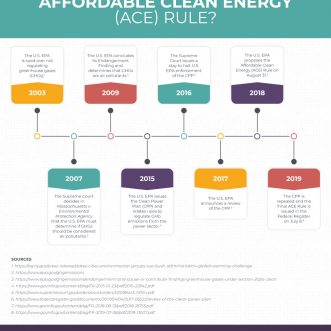On June 3, 2016, U.S. Environmental Protection Agency (EPA) finalized amendments to the Standards of Performance for Crude Oil and Natural Gas Production, Transmission and Distribution (Quad O) and a new subpart at 40 CFR 5360a et seq. (Quad Oa) for post-September 18, 2015, affected facilities. As noted in a previous CEC blog on this topic, U.S. EPA received nearly one million comments following the initial proposal. The new Quad Oa rule establishes emission standards for both methane and volatile organic compounds (VOC) at natural gas and oil well sites, production gathering and boosting stations, natural gas processing plants, and compressor stations. There are several new requirements for oil and natural gas production-related activities in these new federal rules, and it is important to understand how these rules might impact ongoing compliance activities under existing state rules and permit requirements already in effect. In this update, we focus on two of these new requirements due to their history and interrelatedness.
It is clear in reading both the proposed and final rules that U.S. EPA has expanded its understanding of oil and natural gas operations, particularly with respect to upstream E&P. Notably, the requirement for a professional engineer (PE) to evaluate and certify closed vent system design brings a new level of scrutiny borne out of a consent decree with a major oil and gas producer, and placed into practice in both the September 2015 Compliance Alert and the ongoing enforcement initiative targeting “energy extraction activities.” Not only is this new requirement intended to bring industry resources to bear on what the Agency views as a significant issue, but it also attaches professional liability to any subsequent violations attributed to closed vent system design. Further, with additional attention being focused on closed vent system design, the next obvious move on the Agency’s part was either construction practices (which are in many cases guided by industry consensus standards) or the operator’s preventative maintenance program.
From an air pollution control perspective, one focus of an upstream E&P maintenance program is to minimize or eliminate fugitive emissions from production facility equipment. As addressed by the industry during the comment period, there is an economic incentive to minimize losses of otherwise saleable products. Rather than dictate the contents of a preventative maintenance program, the Agency has instead required operators to survey for and repair fugitive emissions at well sites. While not a maintenance program per se, the new rule will require operators to engage in some routine maintenance and communication planning to ensure that fugitive leaks discovered during a survey are repaired and verified within the allotted timeframe.
Many producers operating in the Utica and Marcellus plays already had some form of fugitive emissions survey requirements in effect, as does Colorado. In other states, this will be the first time operators will have to grapple with leak detection and repair programs. This new requirement will have a disparate impact on upstream E&P operators that do not have the resources to employ full-time environmental staff or purchase the equipment needed to perform these required fugitive leak surveys in-house.
If you have questions on any aspects of the NSPS for the oil and natural gas source category, please contact the post authors: Kris Macoskey (kmacoskey@cecinc.com), or Ben Blasingame (bblasingame@cecinc.com).
For those interested in exploring this topic further:
Final NSPS OOOO and OOOOa rule from the Federal Register
U.S. EPA National Enforcement Initiatives
https://www.epa.gov/enforcement/national-enforcement-initiatives
CEC’s previous blog: EPA Receives Nearly One Million Comments on Proposed New Source Performance Standards for Oil and Gas



Post a Comment